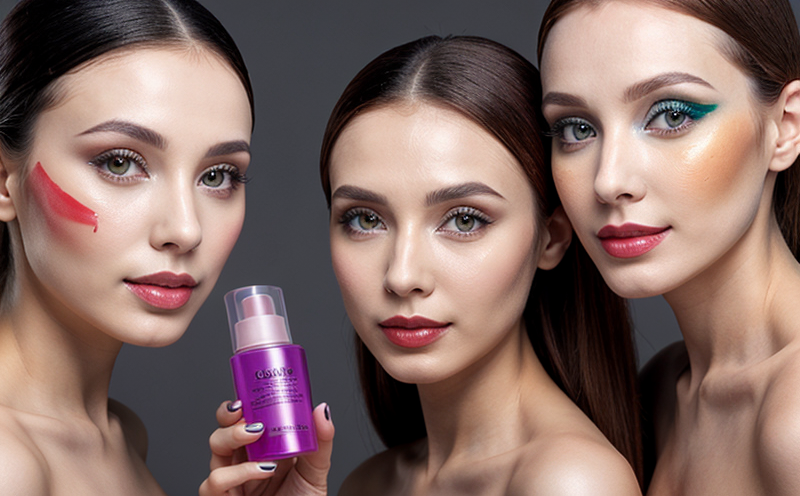In Vitro Hemolysis Testing for Cosmetic Raw Materials
In vitro hemolysis testing is a critical component of ensuring the safety and quality of cosmetic raw materials. This test evaluates whether a substance can cause red blood cell lysis, which could lead to adverse effects on skin or other tissues when used in cosmetics. The primary objective is to determine if there are any potential risks associated with the use of these ingredients in formulations.
The process involves exposing human erythrocytes (red blood cells) to a sample of the cosmetic raw material under controlled conditions. If hemolysis occurs, it may indicate that the substance has properties capable of damaging red blood cells at concentrations present in cosmetic products. This can be particularly concerning for materials intended to come into direct contact with the skin or mucous membranes.
This testing method is essential because it helps manufacturers comply with regulatory requirements set by organizations such as the European Union’s Cosmetics Regulation (EC 1272/2006) and other international standards like ISO, ASTM, EN, and IEC. By conducting this test early in the development process, companies can identify problematic ingredients before they are incorporated into finished products.
The procedure typically follows a standard protocol where specific volumes of raw material extract are added to red blood cells suspended in isotonic saline solution. The mixture is incubated for a predetermined time period (usually 4 hours), after which the extent of hemolysis is quantified using spectrophotometry or visual examination.
Understanding the implications of hemolysis in cosmetics requires knowledge about how red blood cells function within the body and their potential interactions with various compounds. For instance, some antioxidants commonly used in skincare products have been shown to induce minor levels of hemolysis; however, these effects are generally considered safe due to low concentrations typically found in final formulations.
It is important for quality managers and compliance officers to stay informed about current trends and best practices regarding cosmetic raw material safety assessments. Incorporating rigorous testing procedures like in vitro hemolysis helps ensure that only high-quality, reliable ingredients make it into consumer products, thereby protecting both consumers and the environment.
For R&D engineers responsible for developing innovative formulations, understanding these tests can aid in selecting appropriate components while avoiding those likely to cause harmful reactions. Moreover, procurement teams benefit from knowing which suppliers offer tested materials, ensuring they source only safe ingredients for their projects.
Applied Standards
The European Cosmetics Regulation (EC 1272/2006) mandates that all cosmetic products must undergo appropriate safety assessments before being marketed. Particular emphasis is placed on identifying potential allergens and irritants which could harm consumers.
For in vitro hemolysis testing specifically, the most relevant standard is ISO 18537:2004 'Cosmetics—In Vitro Hemolysis Test for Cosmetics Raw Materials'. This international standard outlines detailed procedures for conducting the test on various types of cosmetic raw materials. It specifies both the reagents required and recommended incubation times, ensuring consistency across laboratories worldwide.
Other applicable standards include those related to good laboratory practices (GLP), which dictate how experiments should be conducted under controlled conditions to maintain accuracy and reproducibility. Compliance with GLP ensures that results are reliable enough for regulatory approval purposes.
Scope and Methodology
The scope of in vitro hemolysis testing includes evaluating the safety profile of individual cosmetic raw materials, particularly those known to interact with red blood cells. By focusing on specific compounds rather than complete formulations, this approach allows for more precise identification of any problematic ingredients.
Methodologically, the test follows a standardized protocol involving several key steps:
- Preparation of human erythrocytes and isotonic saline solutions
- Addition of varying concentrations of the cosmetic raw material to be tested
- Incubation for 4 hours at a specified temperature (typically room temperature)
- Determination of hemolysis via spectrophotometric analysis or visual inspection
The degree of hemolysis is quantified based on the amount of released hemoglobin compared to control samples. Results are reported as percentages, indicating the extent to which red blood cells were damaged by exposure to the test substance.
Environmental and Sustainability Contributions
Incorporating rigorous safety testing such as in vitro hemolysis into cosmetic development processes promotes sustainable practices by ensuring that only safe ingredients are used. This reduces the likelihood of recalls or product withdrawals due to health concerns, ultimately benefiting both manufacturers and consumers.
By identifying potentially harmful raw materials early in the process, companies can avoid unnecessary waste associated with producing contaminated products. Additionally, using tested materials supports eco-friendly manufacturing by minimizing environmental impacts related to recall efforts and disposal processes.
The use of reliable testing methods also encourages innovation within the industry, as safer ingredients are more likely to receive widespread adoption. This leads to greater competition among suppliers offering high-quality raw materials, driving down costs for consumers while maintaining product safety standards.





